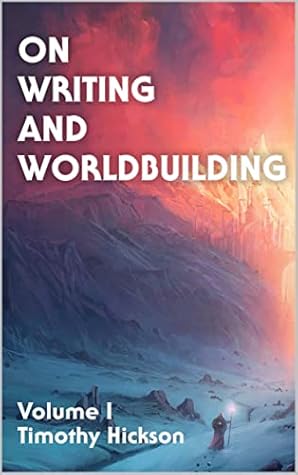More on this book
Community
Kindle Notes & Highlights
Foreshadowing shows the reader the shape of what is to come, but not precisely what happens.
Tone
Foreshadowing allows an author to lay the foundations for a shift in tone that happens later in the story.
This does not mean plot twists should be expected by the reader, as they are often most effective when accompanied by shifts in tone.
Satisfying payoffs
Summary
PART V VILLAIN MOTIVATION
Values and scale
The values behind his actions:
The scale of his motivation:
showing the scale of their motivation reveals the lengths they are willing to go to and what kind of a threat they are.
Reflection
Passive vs. active characters
‘Good guy’ villains
The reason a ‘good guy’ antagonist motivation works is that it creates a more relatable character, which can give the impression of complexity and depth, given how egotistical humanity is and that we all assume we are incredibly deep and thoughtful.
Tension
‘the best antagonist is the one that makes readers cheer when they see them defeated’.
Theme
Save-the-world stories
The protagonists spend far more time concerned with whether they or their friends will die than with whether the antagonist is getting closer to their goal of destroying the world.
Even though the danger the antagonist poses is on a worldwide scale, its threat is primarily established by the threat it poses to individual people.
The obstacles the Doctor faces during the climax are not integral to stopping the virus reaching Earth, but they are integral to stopping the virus killing people.
Summary
Firstly, showing the values behind the antagonist’s motivation helps set them apart as an antagonist.
Secondly, finding the best motive to bring them into conflict with the protagonist is important.
Thirdly, a more passively-motivated antagonist tends to highlight the agency of the hero, while a more actively motivated antagonist can appear more imposing.
Fourthly, ‘good guy’ antagonists can be more relatable for the reader, give a distinctly tragic undertone to the story, and allow the author to more easily develop theme.
Fifthly, save-the-world stories make it difficult to sustain climactic tension.
PART VI HERO-VILLAIN RELATIONSHIPS
Structure
the protagonist and antagonist have to want the same thing.
Having your heroes and opponents want the same thing immediately establishes the stakes early on: that by the end, only one side will stand.
it means they are both decisive agents in the story
The necessary opponent moment
One way to write this moment is to have your antagonist harm the protagonist in a way no other person has before,
Ideology
it is often more interesting when the conflict is not just physical but ideological.
if your hero and their opponent are both after the same thing, their ideological differences may contrast two different approaches to the same problem.
Which values do they stick to when challenged by the necessary opponent?
Which values do they bend, and where do they break?
one way to distinguish your story from this common pattern is with a ‘double reversal’ where both the antagonist and protagonist have a realisation at the end.
Similarity
Where two characters exist in a contrast that highlights the differences between them, this is called a ‘character foil’,
Abilities
Personality or beliefs
Backstories
it narrows the dramatic focus in their rivalry to a limited number of differences that the reader can become more invested in.
Taking similarity too far
focusing too much on similarity often leads to stale or simplistic antagonists that do not feel like they have been allowed much characterisation outside what has already been seen in the hero.
Pitting your protagonist against an antagonist with radically different abilities creates a unique opportunity for your protagonist to change—their


